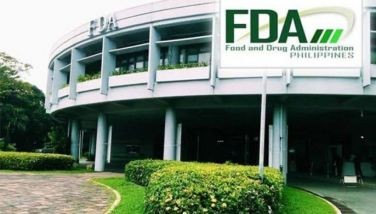Bagong Pilipinas

The House, as I write this, is already on lockdown ahead of President Marcos’ State of the Nation Address tomorrow, July 24.
How has it really been more than a year since the only son of Ferdinand Marcos took his oath as the 17th president of this republic?
Mid-afternoon on Monday, just before the sun sets over the country, we will hear what he has to say.
The lawmakers and their wives, in their best Barong Tagalog or signature suits and designer-made Filipiniana, will walk the red carpet and find their seats in the glittering plenary hall.
Outside, the dissidents will have their own state of the nation report, as they do year in and year out, one administration after another – high food prices, exorbitant oil prices, skyrocketing transport costs, persistent inflation, lack of jobs, human rights abuses. Malnutrition, too, and the poor quality of education.
Against this backdrop, the big question remains. What really is the state of our nation? Where are we heading indeed, this country of 114 million? Are we moving forward or just going around in circles and still finding our way between good times and bad and between upheavals and setbacks with no roadmap for long-term success?
Economic gains
More than a week ago at the historic and majestic 1929 Fairmont Royal York hotel in Canada, Socioeconomic Planning Secretary Arsenio Balisacan said the economy is growing and the momentum has been sustained.
“The Philippines has sustained comparatively remarkable growth over the past decade, with the country’s GDP growth posting mostly between six percent and seven percent a year since 2010. While this was interrupted by numerous challenges faced during the height of the pandemic, our economy demonstrated resilience and strong recovery as we reached a full-year growth of 7.6 percent last year, surpassing the government’s official target of 6.5 percent to 7.5 percent for 2022. The first quarter of 2023, as you have also heard, also delivered good news, as the economy maintained its high growth at 6.4 percent,” he said.
The environment is better, the economic team said. There’s no reason for foreign investors not to come and do business in the country, Sec. Balisacan said during the roadshow in Canada.
These are all positive developments of course. It was also good that early on, President Marcos put an end to COVID-19 related lockdowns. It was a good call because people needed to work.
A year into the administration, however, there’s still so much that needs to be done. A lot of us are still waiting for more specific measures, beyond slogans and rebranding, that would really leave an impact on the lives of Filipinos, especially the fourth of the population who live below the poverty line.
Agriculture
What has happened to agriculture, the portfolio that Marcos himself leads? There are still so many agricultural industries that need to be revived.
Two weeks ago, President Marcos said vaccines for African swine fever (ASF) are forthcoming. This is good news but ASF vaccine availability is just one part. The government also needs to revive the swine industry.
How can this be achieved? The government needs to lower the cost of production. In pigs, around 78 percent of the total production cost goes to feeds. Thus, it is important to lower the cost of feeds, says agriculture expert. Dr. Cristino “Resty” Collado.
One way to do this is to make use of high-yielding varieties of corn – a raw material for making feeds – developed by the University of the Philippines Los Baños Institute of Plant Breeding.
Marcos, for his part, said his administration has to “undo” almost 40 years of “neglect,” since this sector comprises the backbone of the nation’s economy.
“We have done a lot of growth; we are beginning to see the systemic changes that are going to be part of the new bureaucracy. But there is still a long way to go,” Marcos said.
Recently, he ordered the DA to study a proposal to set up silos to ensure a 30-day buffer stock of rice and corn in the country. This would offset the lean years of crop failures and harvest shortfalls.
This is a positive step but he also needs to go after the cartels and the smugglers in agriculture and other industries.
Corruption
In my view, corruption is the biggest problem that Marcos needs to address. This broken system of ours is just so impossibly broken that it has hindered our progress through the decades.
Baguio City Mayor Benjamin B. Magalong was right in asking, “Has corruption become the norm?”
“Are we not going to ask ourselves, is corruption now becoming a norm in government? Is good governance becoming an exception?
“It is very saddening that they have a percentage in every project. They have not yet become tired. They already have a percentage. They are still the contractor. They are still the supplier,” Magalong said, referring to some lawmakers and LGU executives.
Magalong voiced out what’s on everyone’s mind. When will it ever end?
What has President Marcos done to address this? Marcos 2.0 has five more years to fix these big problems and I fervently hope he does.
We all want lasting changes for this country we all claim to love. Bagong Pilipinas – why not? But it really needs to be a newer and better Philippines. Unfortunately, the problem lies deep and solutions need to be drastic. Slogans and propaganda blitz just won’t be enough.
* * *
Email: [email protected]. Follow her on Twitter @eyesgonzales. Column archives at EyesWideOpen on FB.
- Latest
- Trending

























